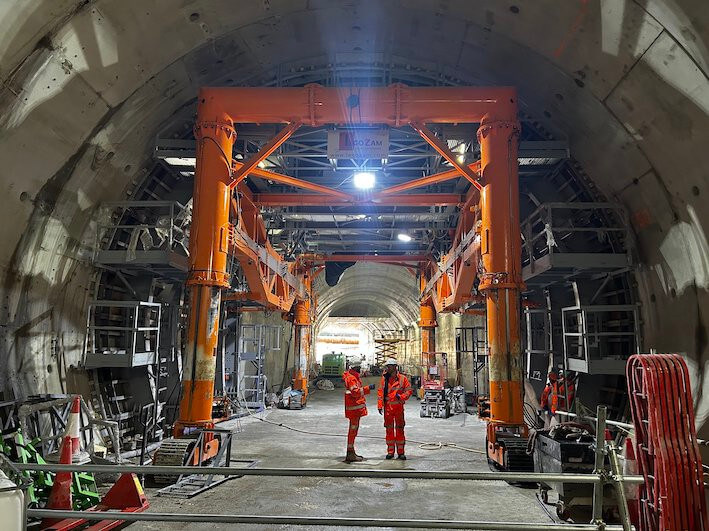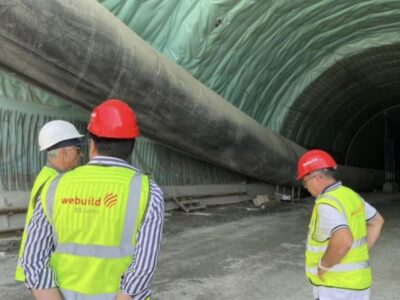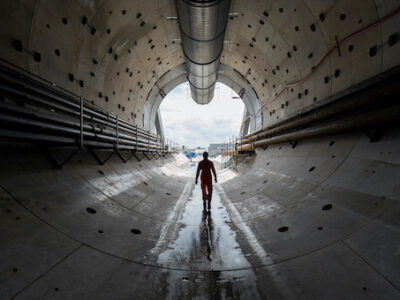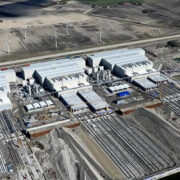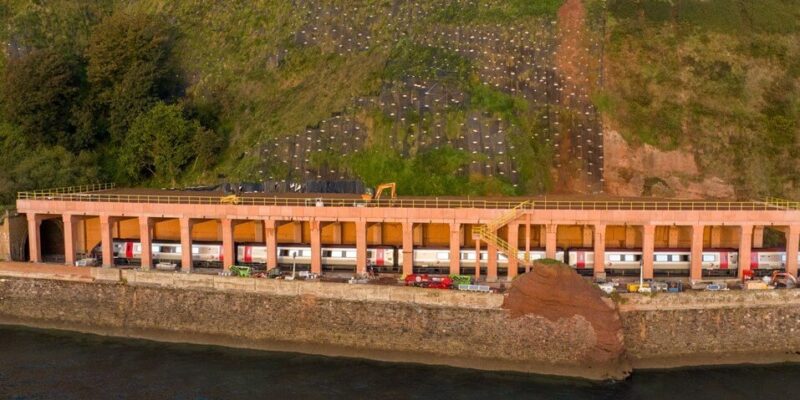
The new rockfall shelter engineering work has been finished, which is said to help protect the coastal railway between Exeter and Newton Abbot in Devon from extreme weather.
The 209m long rockfall shelter extension north of Parsons Tunnel is between Dawlish and Holcombe in south Devon. It has taken two years to construct the structure, which consists of 185 pre-cast concrete units. It will guard the railway from falling rocks and debris from the steep cliffs above.
Morgan Sindall Infrastructure, Network Rail’s contractor, has been delivering the works and used a gantry crane that is running along the track to maneuver the pre-cast pieces into place. Most of the other construction work was done at night when no trains were running.
In addition, the contractor finished piling work for the project straight from the rail track utilizing a specialist rig. Engineers preferred this method since they had determined that the ground condition was not satisfactory enough to be competent to start the piling from the side of the railway.
Consequently, the railway line between Teignmouth and Exeter St Davids was closed overnight between January and March of last year to help the piling work to be undertaken safely.
The shelter’s roof is covered with 4,100t of red sand, and 5,132m³ of foam concrete was employed to backfill between the cliff and the shelter. 7,000m² of stainless-steel netting, guaranteed by 1,400 soil nails, has been installed above the structure to deliver extra protection.
Ewen Morrison, Network Rail senior program manager, declared: “We are delighted that the rockfall shelter is now complete, making journeys more reliable for our passengers on this vital transport link to the South West.”
He continued: “Our teams worked through all weathers to get the job done and encountered very difficult ground conditions. Once the foundations were in place, it was impressive to watch the structure emerge. The gantry crane proved invaluable in meeting the unique challenge of working in such a confined space between the cliffs and the sea.”
The Department for Transport (DfT) has financed the £48M structure as part of Network Rail’s South West Rail Resilience Programme, raised after a significant storm in 2014 cut off the railway to the southwest peninsula for eight weeks.
It gets the total financing in the schedule to £165M, containing the new £80M sea wall at Dawlish, which was finished earlier this year.
Olivia Perkins, Morgan Sindall Infrastructure managing director for rail, expressed: “We are extremely proud of what has been achieved by our teams collectively, including our supply chain, to provide resilience to this iconic section of railway.”
She added: “The weather and ground conditions were challenging, but the individuals involved have worked tirelessly on this complex project, utilizing innovative approaches to minimize disruption to passengers and bringing this project to completion.”
Soon, Network Rail will be proposing its outline business case for the program’s final phase between Parsons Tunnel and Teignmouth to the DfT for deliberation.
The submitted work pursues three years of comprehensive investigation of current data, plus additional ground analyses on the 1.8km stretch of the railway.
Meanwhile, contractors are working on a program of targeted solutions for the cliffs, ranging from soil nailing and netting to groundwater management.
Work is now ongoing to install 19,700m3 netting, secured by 6,000 soil nails on the cliffs between Dawlish and Holcombe. This program is planned to protect the railway without affecting the beaches between Holcombe and Teignmouth, leaving the track where it is.


